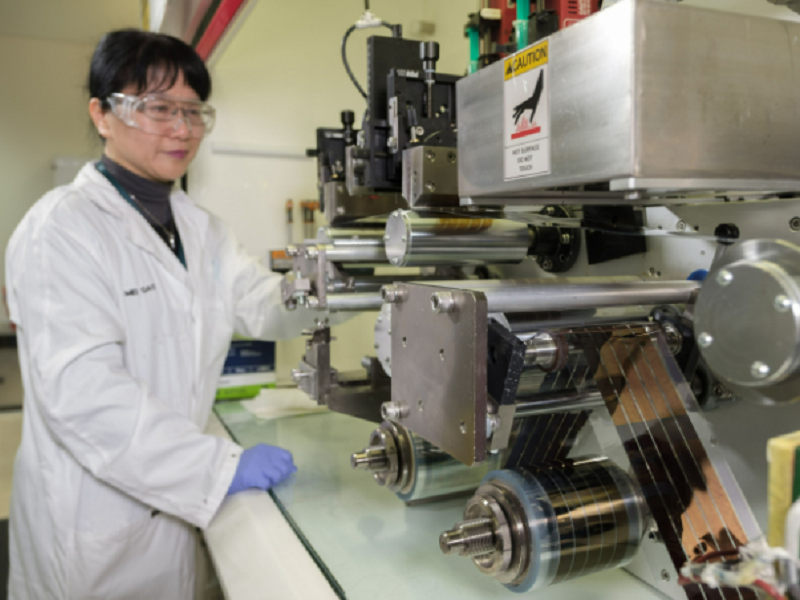A multi-million dollar printed solar cell facility has been established by the national science agency to explore opportunities to commercalise technology that has been a decade in the making.
The $6.8 million facility comes just months after the CSIRO claimed a new efficiency record for the cells, which are printed on plastic films, making them faster to produce and more flexible than the silicon photovoltaics (PV) cells found in rooftop solar.
Industry and Science minister Ed Husic will launch the facility on Wednesday, lauding it as a game-changer for PV and a way to “scale up and get moving” on new products that create jobs while lowering emissions.
“Flexible, versatile, cost-effective – this is another great Australian idea that has put us on the ground floor of a new industry that could be a billion-dollar marketplace in the future,” he said.

Based at CSIRO’s site in the Melbourne suburb of Clayton, the Printed PV Facility gives industry partners access to state-of-the-art equipment and expertise, with the aim of commercialising the technology.
The technology uses perovskite, an advanced material that can be formulated into inks and used in industrial printers, and does not require expensive materials, such as gold and silver used in other cells.
When the CSIRO revealed its efficiency breakthrough in March, CSIRO’s renewable energy systems group leader Dr Anthony Chesman said the printed cells were “on the cusp” of leaving the lab for commercialisation.
That is now in full swing, with Dr Chesman using the launch on Tuesday to call for partners who want to join the CSIRO on its R&D journey, and to “ultimately take this technology to market”.
“This printed solar technology unlocks entirely new applications for affordable, versatile and sustainable energy generation,” he said of the cells printed on long continuous rolls of flexible fill.
Applications for the lightweight, portable solar cells include urban construction, space, defence, mining, emergency management, disaster relief and wearables, according to the agency.
Professor Elanor Huntington, CSIRO’s digital, national facilities and collections executive director, said the facility would offer opportunities to “improve and apply flexible solar technology in novel ways”.
“It’s exciting to see the techniques that enabled another great CSIRO invention to now be available to partners in industry to make a difference in Australia and globally,” she said.
“This not only offers incredible opportunities for Australian manufacturers but also contributes to addressing global energy challenges and advancing the transition to net zero.”
Dr Chesman added that the highly automated system developed by the CSIRO “can produce as many as 14,000 test solar cells a day to fine-tune their design and performance”.
He said the “multiple printing and laminating steps” for the creation of the solar cells is performed in a “single continuous operation”, reducing costs and the upfront investment to get started.
The Printed PV Facility received funding from Australian Renewable Energy Agency (ARENA) via the Australian Centre for Advanced Photovoltaics (ACAP).
Do you know more? Contact James Riley via Email.

